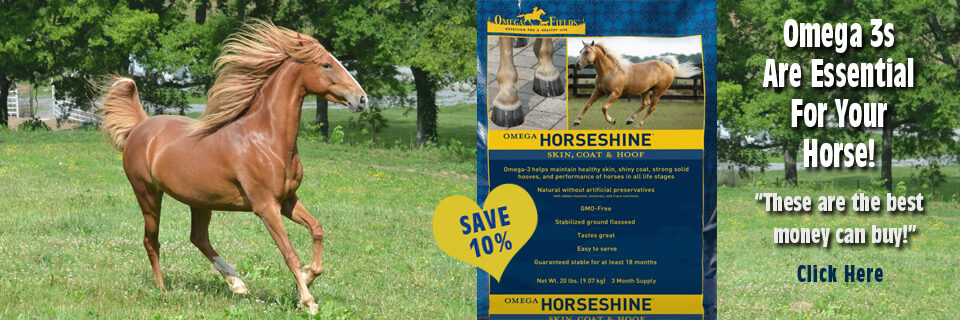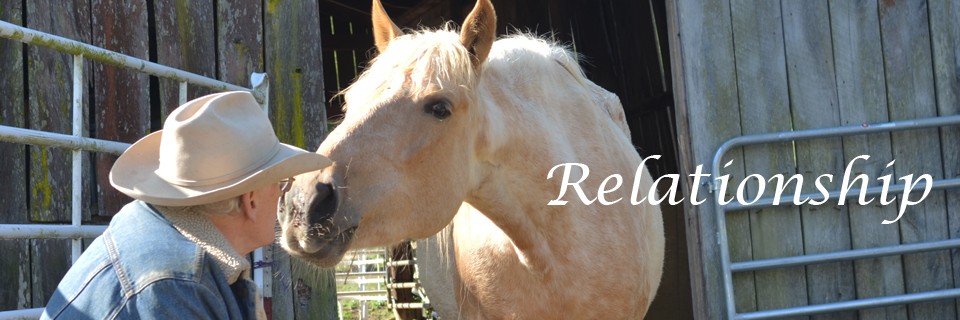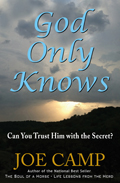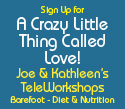
Liberty Inspires Trust
The single most important thing you can do for your horse and your relationship with your horse is to gain his trust. To have him say I trust you. Completely. Implicitly.
Of his own free choice. His own free will.
And the only way to accomplish that is for your horse to be at liberty. To not be trapped by a halter and lead rope. To be able to leave or stay according to his choice, not yours.
I liken it to my relationship with God. He gave me free will, to go and do, or stay and trust him. If he had a halter and lead rope on me I’d be a prisoner wouldn’t I?
Kathleen and I are with our horses at least twice a day and each of those visits and all of our training are completely at liberty. Our eight never feel trapped by a halter and a lead rope. They are free to go and do, or stay, as they please. Therefore when they choose to stay, when they choose to trust, it is their choice, not ours. And that’s when everything changes for the better.



One of the most recent horses to come to us, Zeke (first photo above), eats his meals in the breezeway of the barn while I come and go and fill buckets and place hay. After the first few days with him I wagered that he had never in his six years of life been in the presence of humans without either being locked up or wearing a halter and lead rope. He was mystified. He didn’t really know what to do with himself. No one was hauling him out to the round pen, or throwing a saddle on his back. Or wiggling a lead rope in his face.
A horse at liberty trusts you more, because by allowing him to be at liberty you are trusting him more. He will never feel trapped by a rope. He will be there with you because he wants to be, not because he has to be. He has a choice in the matter.
And another plus: when you boil it down, trust is safer than physical control.
Does that mean you might have to work a bit harder? To be a bit more patient? To re-think things on occasion. To take the time that it takes? Probably. But it’s so worth it.
Mustang Maddy (Madison Shambaugh) gains the trust of unhandled mustangs fresh from the wild, and teaches them everything they need to know up to and including riding the horse, all without a halter, lead rope, bridle or saddle. Usually in a week or less. Completely at liberty. And she has videos. Check them out.
I’m not a professional trainer. I do not do it for a living. But I am a student of what works. Logic and common sense, to a fault, I suppose. And the purpose of these concepts, and this page, is to provide some simple discoveries to folks who love their horses and want to give them an environment in which there can be real communication, understanding, structure, compassion, growth, and trust.
And vocabulary.
Yes vocabulary!
Horses can learn the meanings of words and, like children, as their vocabulary grows they can put those words together into differing phrases and sentences. That’s not supposed to be true according to most, but Kathleen and I have found it to be absolutely true. And now there is even a scientific study proving it, discussed later.
We are big time advocates of positive reinforcement. As opposed to negative reinforcement, which is doing something uncomfortable for the horse until he does something we’d like him to do. Then we release the pressure and call it a reward.
Why would we fly in the face of virtually every trainer we’ve ever been exposed to who are all in lock step behind the use of negative reinforcement. Because, frankly, I don’t believe any horse on the planet spends his time hoping that someone will apply pressure to him so that he can get a “reward” from the release of that pressure.
Positive reinforcement would be something that the horse considers… well, positive. Good. Desired. Even fun.
Whoa! Hold on there. Have we stumbled onto something that actually teaches the horse and the horse enjoys it, thinks it’s fun?
Yes, we did.
You do something I like and I’ll do something you like.
Seems fair.
Enter the use of treats. The limited use of treats. The use of treats only for training. Never without purpose. Never just because I love my horse. Quid pro quo.
Every communication I’ve tried with any of our horses has shown better results faster using treats and words. So I admit it was nice to stumble upon a new scientific study reported by Discovery News verifying that horses are closer to people who treat them well, and the study praises the use of treats and words. Those who have read The Soul of a Horse understand why that gets a big Yippee! from me. We have known for some time that these findings regarding treats and words are true but so many folks preach “Never use treats” and even “Don’t talk to your horse” that it’s really nice to hear that what you believe and have proven to yourself to be true has finally been certified in a scientific manner. Now official so to speak. It made my day. I couldn’t wait to tell the herd.

When we are joined by a new horse, one of the first exercises we always teach is to smile. Why? Because it’s quick, and simple, and establishes comprehension of concept: If I do this silly smile thing I’m gonna get something I like! Which can be quickly translated into: Hmmm… this works with a lot more things than just smiling. Which creates spectacular attention levels and focus when we teach something new. Even better, it teaches them that they can ask for a treat politely without getting pushy or trying to steal from my pocket.


Now all of our horses know the smile. But teaching each one was a little different. We start with a treat grasped loosely in a closed hand, fingers facing the horse, up not down, the back of the hand facing us. Place your hand at about your own eye level. Let the horse smell that you have a treat. Say the word smile over and over. Big smile. Some horses need no more than this and will begin to “lip” your hand, opening their lips as they would when separating a piece of grass or hay. But don’t give the treat until the horse seriously lifts that upper lip way up. If that doesn’t happen begin to wiggle your index finger, sort of tickling the upper lip. This will help cause that upper lip to reach upward. And tells him that’s the body part you’re interested in. This finger movement will also become your visual cue. A quick point and upward wiggle of the index finger. With the word smile. I can now get a smile from Zeke from 10-15 feet away using the verbal and finger cue.
Whenever the horse does correctly, he gets an immediate “Good boy” plus the treat I hold in my hand. Some horses need to be tickled harder than others. With one, I had to reach out and actually lift the upper lip into smiling position before he understood.
Now that Zeke understands the word “BIG”, emphatically delivered, I use that verbal cue to get his head or lip higher if he gets lazy. Or his foot, or whatever.
We quickly discovered that training with treats not only enhanced communication, for the first time it gave our horses a way for them to speak to us, to initiate conversation. With traditional training, we were always the ones doing the talking. Telling the horse, one way or another, to do this or do that. Never did we ask or listen to what the horse might want. Or realize that once the horse grasped the concept that when we began teaching something new there would probably be something in it for him, and he would therefore pay stricter attention and really try to connect the dots. It took me a matter of only minutes, not hours or days, to teach Cash and Zeke to flex and touch both rib cages, or wave hello with both front feet. And I taught Zeke to spin on cue, from the ground, with only a hand signal and a word, in three ten-minute sessions over three days.
When trust is given, then relationship thrives. Your horse enjoys being around you, actually has fun with you, and halters and lead lines are a thing of the past. We almost never fall back on them. All of our typical ground work we now do totally at liberty. And the leading byproduct of all this is more trust. A horse at liberty trusts you more, because by allowing him to be at liberty you are trusting him more. He will never feel trapped by a rope. He will be there with you because he wants to be, not because he has to be. He has a choice in the matter.
Many trainers set out to teach beginners to get their horse’s “respect” so that they will be safe. So that their horse won’t hurt them. At first blush that’s a reasonably sane concept. But where there is no relationship of trust, whether these teaching folks choose to tell you this or not, there is always an element of force or domination involved in an attempt to obtain a “show of respect” from an untrusting, fearful horse. Not necessarily physical domination, but, at the very least, mental domination of the horse.
To anyone who doubts this I say throw away your halter and lead rope and then attempt to teach that lesson in “respect” to an untrusting, fearful horse. When you are in relationship, when your horse trusts you, when he has made that decision on his own, you don’t need the halter and lead rope to teach. And respect is a natural byproduct of that trust. Zeke has proven that. Our entire herd has proven that.
I didn’t train Zeke to come to me when I call his name. As the trust evolved and the fear dissipated, that’s something he chose to do on his own. Which is a pretty strong testimony for what trust can do. And usually when he comes to a call he comes running. Which frankly in the wet weather we’ve been having I would prefer he not do. But he insists.
One recent morning, as he tore into the barn breezeway he ran up to me, skidded to a stop, and gently touched his lips to mine. He was giving a kiss. He knew it would get him a treat. But he also wanted to do it. He wanted to please me. And I wanted to please him. After the treat I gave him a hug and we both went about our business, me prepping buckets for feeding. Him munching hay from the hay room. To daily be in the presence of humans who have no agenda with him whatsoever – no plans to halter him or tie him up, or cause him fear, or pain, or worse – is the best tonic for eliminating that fear, and for building trust. You are giving him no reason to not trust you. Once all this is etched in stone, then we go on to other things, like riding. But from a position of total trust.
So there’s the summation. Be at liberty… and never ever do anything that could even possibly evoke a fear response from your horse. Horses remember everything, the good, the bad and the ugly. The last thing I’d ever want embedded in my horse’s memory banks is something that caused him to fear me. I can be his leader and rise to whatever task is needed without ever evoking a fear response. He has granted me that privilege by choosing to trust me to be his leader.

Our new rescue Poppy, learning to smile
Subscribe to Our Newsletter
Benji
Streaming On Netflix, Disney+ and Amazon Prime
Love him again!
All titles Widescreen HD
On Amazon Prime:
The Original Benji
For the Love of Benji
Benji Off the Leash
On Disney+
Benji the Hunted
On Netflix:
Benji’s Very Own Christmas Story
The New Benji
The new Benji was released in 2018 and was
written and directed by Joe’s son
Brandon Camp




















































